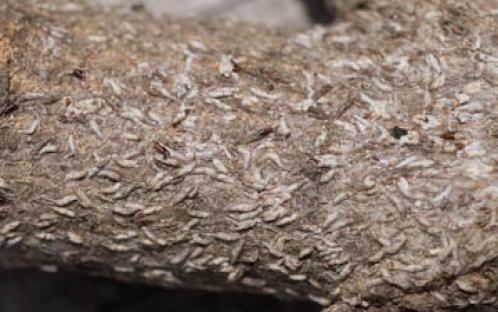Introduction
Japanese maple scale (Lopholeucaspis japonica), also known as Japanese scale or pear white scale, is an invasive pest that infests a wide range of woody plants. The insect is native to Japan. In 1914, Japanese maple scale was discovered in the United States. It was first reported in Connecticut. It was likely introduced to the country inadvertently, through materials imported from Asia. The insect has since spread across the eastern United States, where it now feeds on plants in over 45 genera in 27 families.
Distribution & Habitat
Japanese maple scale is prevalent in its native region. In the United States, it has been discovered in Washington D.C., Alabama, Connecticut, Delaware, Georgia, Kentucky, Louisiana, Maryland, New Jersey, New York, North Carolina, Ohio, Pennsylvania, Rhode Island, Tennessee, and Virginia.
Hosts
Japanese maple scale feeds on a bevy of hosts, including apple, ash, boxwood, camellia, cherry, cotoneaster, crabapple, elm, euonymus, holly, honeylocust, hornbeam, Itea, Japanese holly, Japanese maple, Japanese zelkova, Kousa dogwood, lilac, ornamental pear, privet, pyracantha, redbud, red maple, serviceberry, stewartia, styrax, and yellowwood.
Description
The eggs laid beneath the waxy coverings of the females are white, with a purple hue. Newly emerged crawlers, or larvae, are small, with an oval shape, and a purple coloration. The crawlers have thread-like, piercing mouthparts, which they use to extract liquids from host plants. The adult females are concealed beneath a dark brown covering made up of the enlarged second instar exoskeleton. The exoskeleton is elongate, and reddish-brown. It is coated in a thick, grayish-white wax. If the wax is gently rubbed or treated with oil, it will reveal the exoskeleton. Mature females measure 1 to 2 mm long, and are shaped like an oyster shell. The adult males are similar in appearance to the females. However, their waxy coverings are smaller.
Life Cycle
In cold environments, Japanese maple scale produces one generation per year. In warmer locations, there may be up to two generations. From late April to late May, immature second instar adults emerge from infested plants, and resume activity. Once mature, the adults mate. The males expire shortly thereafter. The females deposit around 25 eggs under their bodies, and then die. The crawlers hatch from mid to late May, depending on the geographic location. Within a few hours, they settle on the bark, trunk, and branches of the host. If populations are dense, the crawlers may infest the host’s leaves as well. The crawlers initiate feeding by inserting their mouthparts into the tree. They extract sap and other plant liquids, readily consuming them. This feeding period lasts until fall. Once cool temperatures prevail, the immature crawlers become inactive. They overwinter, and reappear the following spring, beginning the cycle anew.
In locations where two generations are formed, the second generation, or fall brood, hatches in August and develops from late August to October, before overwintering.
Symptoms of Infestation
Due to their ability to blend in with the bark on many of their hosts, it can be difficult to detect Japanese maple scale when a plant has first been invaded. As scale populations increase, they become more visible. Severely infested plants will often be laden with crawlers. At times, the crawlers may fall from the host, and plummet to surfaces located below. If infestations persist, affected plants will often experience extensive foliar dieback. Infested plants may also shed their leaves prematurely. Eventually, affected hosts may expire.
Management
- Maintain plant vigor through sound cultural practices. Ensure that plants are sufficiently watered, especially during extended periods of drought.
- Apply organic mulch around the base of vulnerable plants to improve the soil conditions.
- Prune and destroy heavily infested branches or twigs.
- Systemic insecticides may provide some control when scale populations are small. Perform applications from late May to mid-August, when the crawlers are active. If multiple applications are required, administer them at 3 to 4 week intervals.
- When the adults expire, their covers will sometimes remain attached to the host. The covers can be removed from the host using a pressure washer, or a scrubbing brush and water.
- Monitor potential hosts for crawlers during their emergence period.
- Japanese maple scale may be invaded by parasitoids, which can drastically reduce scale populations.
- Dormant applications of horticultural oil can be applied in fall, after the leaves have dropped, or in spring, prior to bud expansion. Horticultural oil can also be used to smother the crawlers before they construct their covers.
Photo courtesy of the University of Maryland


